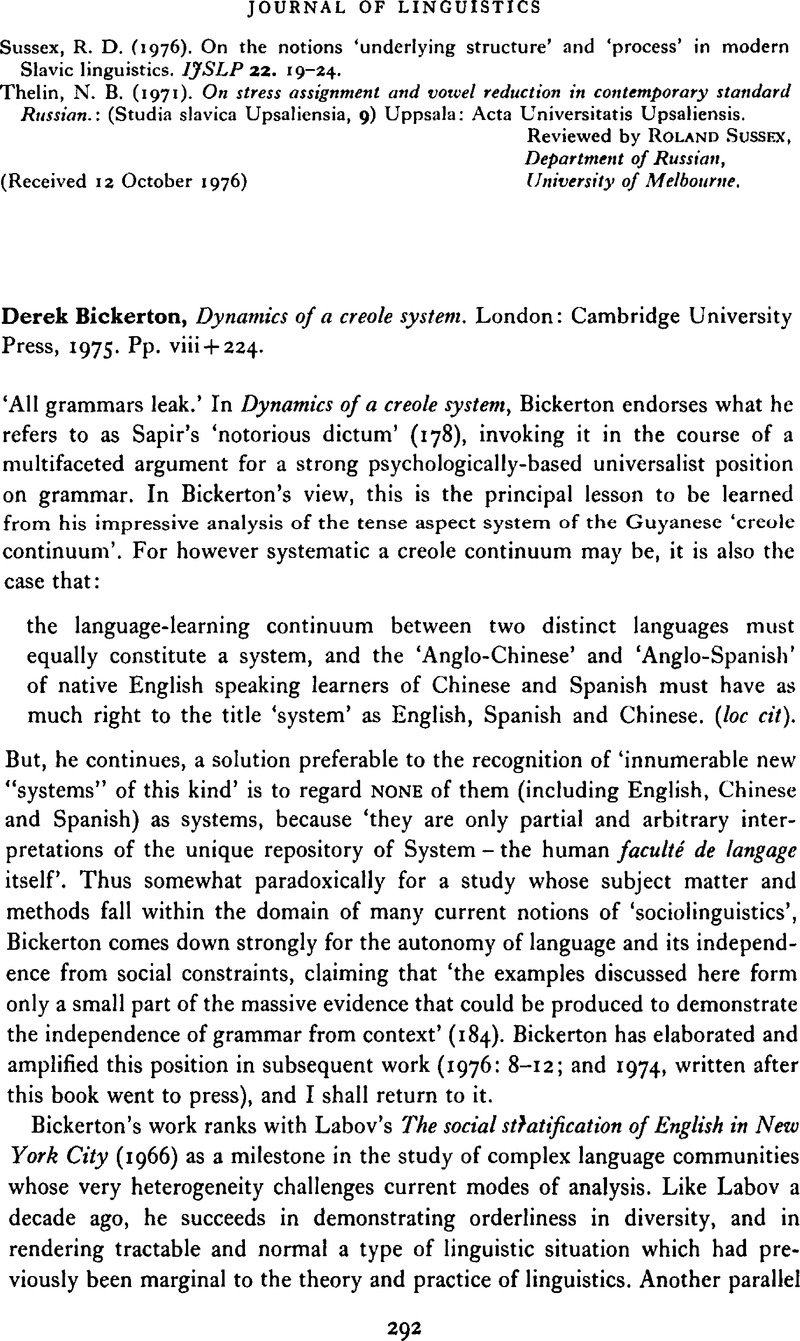Crossref Citations
This article has been cited by the following publications. This list is generated based on data provided by Crossref.
Page, R. B. Le
1979.
Dell Hymes, Foundations in sociolinguistics: an ethnographic approach. London: Tavistock Publications, Pp. x + 248. - Norbert Dittmar A critical survey of sociolinguistics: theory and application. (Translated from the German by Pieter A. M. Seuren and Kevin Whiteley.) New York: St Martin's Press, 1976. Pp. x + 307..
Journal of Linguistics,
Vol. 15,
Issue. 1,
p.
168.
Widdowson, H. G.
1979.
The Acquisition and Use of Language System.
Studies in Second Language Acquisition,
Vol. 2,
Issue. 1,
p.
15.
1981.
Language and speech.
Philosophical Transactions of the Royal Society of London. B, Biological Sciences,
Vol. 295,
Issue. 1077,
p.
215.
Gibson, Kean
1983.
Inherent variation or language change?.
Lingua,
Vol. 60,
Issue. 4,
p.
341.
Sankoff, Gillian
1991.
Review of Holm (): Pidgins and creoles. Vol. 1. Theory and structure.
Journal of Pidgin and Creole Languages,
Vol. 6,
Issue. 2,
p.
310.



